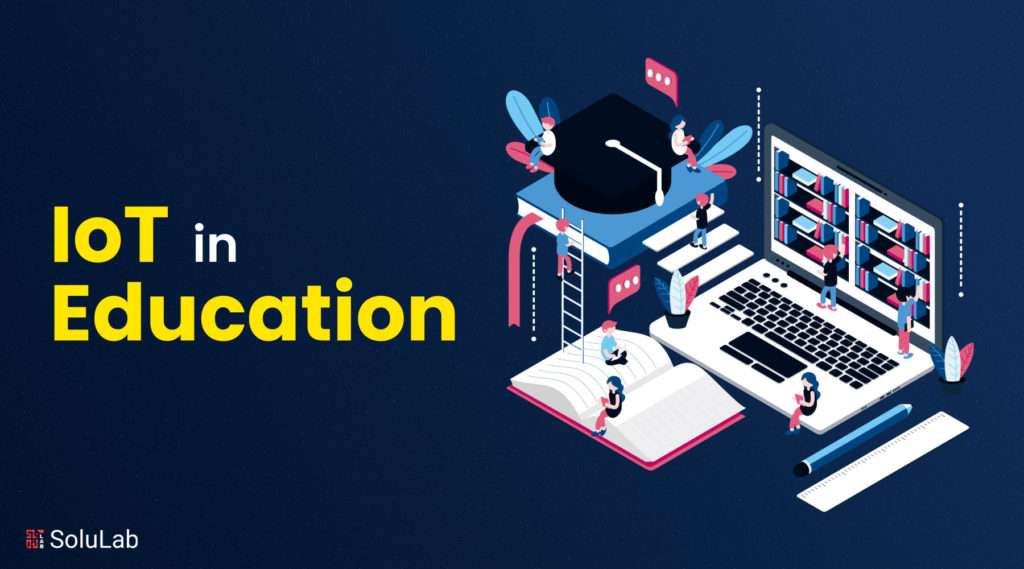
Internet of Things (IoT) Solution For Education
Internet of things help professors and educational institutions to establish procedures and structured educational scope in efficiently managing important educational resources. It also helps providing students, parents and tutors with holistic information.
Today, Internet of things is considered to be a huge spectrum that provides accessibility to educational information that people thought never even existed. For example, with the internet of things, students are even able to learn the patterns between to scientific theories or connectivity between two technologies in real-time. With the help of the internet of things, it is possible to have connected device operation between smartphones, laptops and different PC systems. This in turn, increases the interoperability.
Benefits of Internet of Things in Education
1. Ensures the safety of educational institution and its campus
Technologies such as RFID (Radio Frequency Identification) is highly beneficial when it comes to tracking something. With RFID and IoT combined together, the accessibility and controlling of devices have become much better. In real-time, educational institutions can track school buses or individual students within campus by placing RFID tags in their Identity cards, etc.
This will be highly helpful in case of any emergency. With the internet of things, educational institutions can use IoT based video sensors to ensure the security of administration cells such as exam cells.
2. Enhanced understandability with interactive learning
Learning theoretical knowledge or practical knowledge is just not enough with the rate at which the world is increasing in terms of competition. Today, both kinds of learning have to go hand in hand. With IoT in education, it is easy to combine images, text and information together. This way one can make the learning process more interesting and enriching as possible.
Textbooks can be integrated with online websites and additional interesting videos, informative links and resources or assessing exercises, etc. This also supports the students to have an engaged learning process. One of the other important benefits of interactive learning is that it provides different perspectives for the students to look at what they learn. It also helps professors and tutors to look at the method of teaching in different ways to make the learning process interesting for the students.
Read Blog: IoT: The Future of Innovation & Technology
3. Increased operative efficiency provides better insights
With the internet of things, tasks like taking student class attendance has become easier and efficient. Traditionally, professors and tutors used to maintain a log of attendance manually. But, today, with the internet of things, professors and tutors can use devices such as tablets or smartphones or any digital system to take attendance. Also, they can store them on a digital server or cloud.
Multiple access to files and personnel is possible through IoT by storing in one central system. Due to the centralized storage of data, it reduces the need for any human interference in accomplishing any operation. IoT supports automation of processes to the maximum extent as possible. This provides tutors and professors with extra saved time to focus more on teaching.
4. Faster operating environment makes any process simple
With the internet of things, there is no need to carry cash in hand at all times. Parents can make fee payments anytime, anyplace and any amount of money quickly. They also get the tracking ability to track the cash movement in real-time. Hence, it is easy to check if the educational institution has received fee payment.
Internet of things also help to reduce any queuing time, especially in dining areas and cafeterias. Online payments with IoT integration reduces queueing time to a large extent.
5. Internet of things increases collaboration and performance
Using internet of things, it is also possible to understand the neurosensory cognitive activity of a student’s brain via smart wearable technology. Such understanding allows tutors and professors to customize the teaching process for students according to their IQ levels. This in turn will help students to learn at their own pace and with ease too.
Real life Examples of IoT in Education
Scanmaker
It is an IoT enhanced tool that is coded with necessary languages and can function wired or wirelessly. It helps in scanning texts from various books, documents, etc. that are hardcopies and transferring them to a tablet, computer or a phone in the form of a soft copy easily. Scanmaker is widely used in schools in Kansas City, Missouri.
Magiccard
These are physical cards that are integrated with IoT to function as a digital card. It is helpful in occasions such as requirement of authentication, attendance, e-learning or getting accessibility to facilities with this card as an alternative for photo I.D. Magiccard is widely used in schools in Weymouth, U.K.
Conclusion: IoT enhances tech-literacy
Internet of things will help educational industry to save time, money and integrate data from different departments. It will also increase the interoperability for better and smarter decision making. IoT has the potential to remove educational barriers such as language, economic stability of the education institution, etc. Also, IoT in education helps to bridge the communication gap between administration, professors and students. This boosts overall productivity. IoT will positively disrupt education as we know. Let us know, what are the other ways do you think IoT can benefit the education sector?




